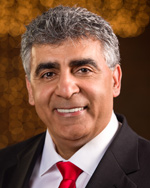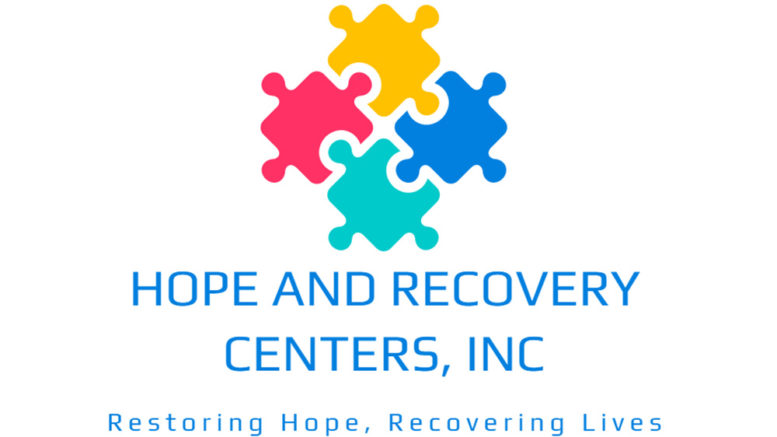By ROCKY SHANEHSAZ
Guest Columnist
 Drug overdoses kill more than 100,000 Americans per year – more than vehicle crashes and gun deaths combined. Fentanyl, a legal prescription pain medication, is responsible for a large number of these deaths. Hamilton County is not immune to this drug pandemic problem!
Drug overdoses kill more than 100,000 Americans per year – more than vehicle crashes and gun deaths combined. Fentanyl, a legal prescription pain medication, is responsible for a large number of these deaths. Hamilton County is not immune to this drug pandemic problem!
Hope and Recovery Centers Inc., a 501(c)(3) not-for-profit organization, has been preparing for its grand opening in Noblesville for the last few years. The program’s vision is to provide two years of sober living with various phases, using donations, foundation money, and grants. Hope and Recovery Centers Inc. has joined forces with the Miller Care Group, Step-Up Staffing and Chapel Church to provide a comprehensive ministry-based drug rehabilitation service to individuals with alcohol and drug addiction.
Our first foundation was established this week as Brian Foundation. Brian died at the tender age of 43 due to abusive alcoholism disease. The family elected to provide support to the needs of the community so that no one would experience the pain of losing a loved one due to addiction. In lieu of flowers, they requested donations be sent to Hope and Recovery Centers Inc. A full 100 percent of this funds are designated to provide support medications necessary for individuals to combat opioid addiction through Miller Care Group.
Noting that a major issue is fear of opioid withdrawal, four years ago, the FDA approved a single medication to mitigate opioid withdrawal called Lucemyra (Lofexadine). Clinical use has shown this non-opioid medication to be a major treatment for withdrawal, which can last for days. The medication can be costly, as despite FDA approval, far too many insurance companies have not yet adopted it as a mainstay in the treatment of opioid addiction. The use of this medication has the potential to be a major game changer by helping opioid substance abusers mitigate the potentially horrific effects of withdrawal. Subsequently, preventative measures, including mental health counseling, psychiatric intervention and use of Vivitrol (an opioid and alcohol blocking injection) is employed.
Hope and Recovery Centers Inc. is planning to be the most comprehensive rehabilitation centers for patients and their dependents by providing services unlike anything else available in the industry. The future planned phases are as follows:
Identify candidates suited for the program.
The addicted individual needs to release their decision-making control to the program of Hope and Recovery Centers Inc. This allows Hope and Recovery to become his/her guardian and will provide assurance of continuity of the recovery. This act will prevent the patient from prematurely opting out of the program. Many other recovery programs fail to achieve this, because the decision to stay loyal to the program is made by a drug-impaired patient. When committed to treatment, Hope and Recovery will pay for the patient’s full insurance to prevent financial bias.
Phase 1
Seven days of detox with medical supervision.
At a certified facility, under care of the doctor, a medical intervention is conducted to start an immediate detox for all abused substances including alcohol, opioids, stimulants including methamphetamine, cocaine and spice, benzodiazepines, marijuana, etc.
Phase 2
Pathway determination (21 days).
Each individual patient is unique in their circumstance. The program is tailored to consider all factors (external and internal) of the patient to ensure the most effective path to success. In this phase, environmental influences such as financial stability, family dynamics, spousal dependence, children, and medical history are identified. This section is managed by the Social Services Division of Hope and Recovery.
Phase 3
First six months of in-patient is a 24/7 stay at the gated facility with strong emphasis on medical treatment and counseling.
During this period, all contact with outside influences is extremely limited. Visitors must be screened and approved by the Medical and Social Services Division. This is necessary to remove negative associations with outside individuals during treatment. Individuals affected by addiction have an awkward way of identifying friends! Often, these so-called friends are a part of the problem. This is also necessary to avoid contamination of the safe environment for treatment.
Phase 4
Second six months – graduate to receive educational opportunities such as GED, or six-month certification in schools/colleges that are preapproved.
This phase prepares the patient for reintegration and provides the ability to become self-sufficient financially. Patients are equipped with monitoring devices, and their location must be pre-approved. They are transported with Hope and Recovery buses, and upon return, are evaluated for any potential contamination. They also attend classes at Hope and Recovery to learn how to find jobs, complete an interview, and dress for success.
Phase 5
Step-Up Staffing starts career development and job placement.
Step-Up Staffing’s mission is to keep the now recovered patient employed and monitor their progress. Step-Up Staffing will help the patient find employment, learn how to stay employed, provide transportation to and from the place of employment, and track the employee-employer relationship. During this one-year period, the patient will have monitoring devices on them, and when returning to the facility, they are assessed every time for any untoward issues.
Phase 6
Alumni Phase, or Final Phase, is a period of 15 years after completion of the two years in-patient.
The patient will become an alumnus and will come back as a mentor for others in the program, at least four times annually. Five percent of his/her gross income during this period will be used to pay back the program for its two years of investment. The main reason for this financial arrangement is to keep track of the patient for an extended period.
* * *
No one ever completely heals from addiction. They learn how to control and live with addiction on a daily basis so that it does not consume their life.
If you wish to create a foundation in memory of a loved one, or pay toward an existing foundation, please contact Hope and Recovery Centers at hopeandrecoverycenters.org.


This is an excellent article explaining the process of helping any addict being offered by this organization.
An interesting, albeit extreme method ; full guardianship & the premise that ; ‘No one ever completely heals from addiction’
Is this a new methodology, or a clinically proven program ?
Doesn’t appear to put any portion of responsibility on the patients themselves.
One would think a program would have a better chance for success if the patients were somehow vested in the process rather than passive participants under lock & key.